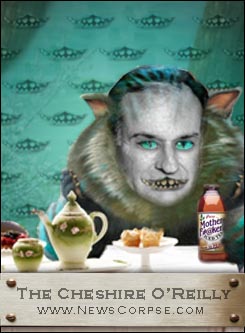
So following are some random pictures of things in bloom at the zoo, and some animals, and some thoughts I had about the movie.


When the sun broke out on Thursday after seemingly interminable rain, the entire city decided to make the zoo their destination. Traffic was snarled and drivers were honking and yelling in a raucous manner very unbecoming for the City of Brotherly Love.


Once inside though the crowd disbursed and it turned out to be a very pleasant tour. Then yesterday, Friday, I finally got around to the movie theatre to see Alice. The reviews were scalding so I didn't expect much but, since the books have always fascinated me, I had to go anyway.

Thus I was astonished to see that the movie is enchanting, the acting is droll, the dialogue and choreography a tour de force of acerbic wit. The costumes and makeup and sets are by themselves riveting. I am going to purchase a dvd and watch it more than once, because, in addition to dazzling originality, it also is brimming with so many reverential nods to earlier masterpieces like the Wizard of Oz and Narnia, and no doubt several others, that it's impossible to recognize them all in one viewing.
I loved it for the voluminous, deep references to dreams and nightmares, to the struggles of spirit and independence and freedom against repression and convention. I'm surprised that in the wake of much discussion in print and on blogs about the ecological themes in Avatar, more has not been said about the clear references to environmental degradation in Alice, when they are just as plainly articulated in the plot.

To my mind the Red Queen is an almost blatant, deliberate caricature of Sarah Palin, complete with the futility of lipstick smeared on a pig. The heedless, sneering cruelty to animals, the adolescent temper tantrums, and the delusional, self-absorbed vanity, are a perfect parody of Caribou Barbie. They both believe in that fundamentalist tenet, that their role is to exercise dominion over all other creatures.

This destructive philosophy is demonstrated with visceral power in a scene where she wields a quivering flamingo as croquet mallet, and whacks a terrorized hedgehog with unconcealed relish.


In stark contrast is her rival, the White Queen, who has pledged to never harm a living creature. The fact that they are sisters has no little import and adds another layer of complexity.

Last but not least, the apocalyptic landscapes of charred, twisted trees are at least as convincing as those of any doomer porn (the Book of Eli for example). Even the vegetation that does remain around the Red Queen's castle is stunted and discolored, looking exactly as though it had been exposed to high levels of background tropospheric ozone.

After I got home from the zoo and downloaded my pictures of the animals, they all appeared so mournful and dejected.


It reminded me of my last post, Gratitude, wherein I had been thinking that although I should feel grateful


for all the creature comforts I enjoy, I'm not! I'm angry that our habitable climate has been irretrievably squandered and we are leaving a hellish existence to our children.


But for the most part, the trees at the zoo were a backdrop of hideous death. Going to Philadelphia, along the highway they are toppling like dominoes. At the zoo, it was disconcerting to see so many people basking in the unnatural warmth without any sense of alarm, wandering past dying trees oblivious to the carnage, or to the implications for our food supply.
Every tree in the particular pattern of its species has some form of splitting, peeling bark (Bark Atrophy Lichen Decline = BALD syndrome). It can be detected in physical separation and in this two-tone coloration.


The best of the evergreens have lost a significant number of their needles, and are turning yellow and brown.


There are several mature Thornless Honey Locust trees at the zoo.

Their bark is breaking off, and there is a vile acid green fungus spreading on them.


Their bark is breaking off, and there is a vile acid green fungus spreading on them.

It cannot be the bark splitting off because the growths are wider than the twigs to which they are attached.
Another nasty new result of ozone poisoning is the blackening trunks, particularly of maples. It could be that they are leaking sap, and that provides a medium for fungus.


I am afraid that the difference in color at the base of the trunk is indicative of losing the surface of the protective layer of bark. It's got quite a hole, and a fascinating, droopy downward growth.


It is troubling that on a cloudless day, with an almost painfully bright blue sky, a murky haze mars the distance.

Thus I was utterly incredulous when I read this report in Science Daily from researchers at the Smithsonian Institute in Maryland, stating that longer growing seasons, warmer temperatures, and rising CO2 are making the trees grow faster. Although that is likely true, it is clearly being offset by either negative aspects of faster growth (weaker structure, cracking bark, making access for insects and disease) and/or, the growth inhibiting effects of concurrent exposure to inexorably rising background levels of toxic ozone.

Many years ago friends stayed at Wit's End, for a vacation from their home in Manhattan, while we were away. They never returned. Even though they lived in an NYU highrise next to the medical center, and the howling of ambulances made uninterrupted sleep impossible, they found all the night noises out here in the country, frightening. Frightening! Lions and tigers and bears, oh my!
I myself have always welcomed the racket of crickets, and the occasional screech owl. Every now and then something screams in the night and there the sound of splashing in the creek. I still don't know who is eating what and to be truthful it is quite violent.
Anyway the point is, our friends wouldn't be afraid if they stayed here now. There are hardly any sounds coming from the woods and wetlands anymore. My friend Catarina characterized it with one word, "hollow." There is no question in my mind that the ecosystem is collapsing, and life in all its forms is diminishing. The desolate scenes in Alice are pretty close to what is going to be the fate of our forests.
I wrote to the lead scientist Dr. Parker and Dr. McMahon to ask when the last measurements were taken, and what if any explanation they had for the disparity between their data and what I observe. They never answered. I basically shelved it (although I linked to it at the Basic Premise page) since it is so at odds with what I have observed, and it's just incredible to me that anyone sponsored by an organization as prestigious as the Smithsonian could possibly be corrupt (even though the research was funded in part by HSBC which is infamous as a greenwashing corporation).






THEN I read this staggering post and a followup, at climate progress, about Koch funding a Smithsonian exhibit and a not-coincidental fudging of climate science found there.
It's just plain disgusting to think that scientists could be bought off by polluting interests. Although I suppose it has certainly happened before - think of the scientists that were paid to sow doubt about the connection between tobacco and lung disease. For a colossal compendium of the connections between industry funding and professional denialism, follow the link to Crescendo Climategate Cacophony posted here.
Along the same lines is this article in Science Daily which reports on research at the Rochester Institute of Technology's Center for Integrated Manufacturing Studies, that indicates - hurray! - ethanol will reduce emissions of carbon monoxide and hydrocarbons compared to gasoline. Isn't that wonderful!!! Except...except... I reached one of the authors by phone, Brian Hilton, and asked him if they had tested for acetaldehyde, formaldehyde, or peroxyacetyl nitrates.
Nope! They didn't test for that, and neither is anybody else he could tell me. Not too many researchers have the equipment to test for those emissions, he explained, because it has to be heated and so forth...oh well, too bad, since those are the emissions that are so toxic to humans and vegetation...
Can somebody please tell me why our government is mandating the addition of ethanol to gasoline when nobody seems to be checking to see if the emissions are safe for humans and plants to breathe?
As this study and this one make clear, emissions from ethanol and biofuels are WORSE for health than those from fossil fuels.
Update: I just came across (via immoralminority) this marvelous blog post, Malice In Wonderland, that created these unbelievably uproarious photoshops - I am really looking forward to reading News Corpse every day!!

























Brilliant posting.
ReplyDeleteYou are linking all these totally insane, Alice-in-Wonderland-nightmares. Now I have to see the movie, I know we are already at a mad tea party.
catman here:
ReplyDeleteYep, a mad tea party.
I fear that the dying of the trees portends the world wide loss of forests. It will probably look like your photos and the trees around my house. With little natural replacement, the dense woods thin, while the thin woods turn to shrubs and weeds. We are watching the first stages of widespread desertification, the lessening of biomass in an area. When the biomass no longer contributes to the atmospheric moisture and rain, the area dries out and begins to actually look like a 'desert'.
Rain makes trees. Trees make rain.
http://news.discovery.com/earth/deserts-middle-east.html
Um, you might want to do a little research before you make observations and draw conclusions. Your concern over the ridges on the American Sweet Gum, is a distinguishing natural characteristic of the species. But hey, why trust me.... http://www.avtreefarm.com/files/amer%20sweet%20gum.htm The natural mosses and lichens that grow on trees is another one of your interesting but erroneous conclusions. After that, the rest of your post is just plain silliness.
ReplyDeleteI wasn't "concerned" about the sweet gum, I was "curious". After that, I wonder if working for Bayer infuences your opinion at all? Killed any bees lately?
ReplyDelete